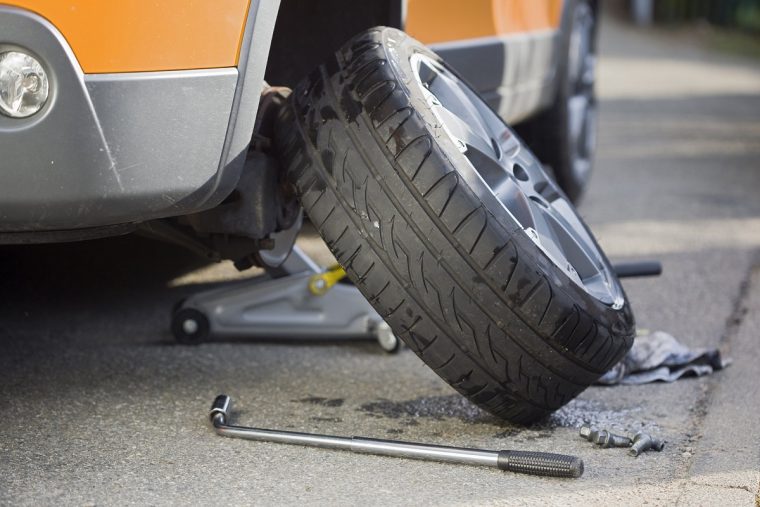DIY Car Care: How to Rotate Tires Safely and Correctly
Getting your vehicle’s tires rotated is often an add-on service during a scheduled oil change. But for those who want to either limit the cost of a maintenance visit or tackle something new, there’s always the option of rotating the tires yourself. Just be sure to follow these tips to ensure that you complete the process correctly and safely.
Keep It Classy: How to easily maintain and clean your luxury vehicle
Gather your materials
Many cars come with a variety of tools (sometimes located in the trunk or cargo area), but here’s a list of items you’ll want to have before doing any work:
- Set of four jack stands
- Tire iron or lug wrench
- Container for holding lug nuts
When selecting jack stands, you want to choose those that will be able to hold the weight of your vehicle. For most sedans or small cars, a 4,000-pound jack set is ideal while larger vehicles like trucks or SUVs may require a jack rated at a minimum of 3 tons or 6,000 pounds.
You’ll also want to be sure that your car is parked on a flat, level surface — whether it’s in a garage or a driveway. Attempting to lift a vehicle on an incline makes this process a lot more dangerous and difficult.
Loosen the lug nuts
Before lifting the car, you’ll want to loosen the lug nuts on each tire, but don’t remove them just yet. When the car is still on the ground, you’ll have more leverage to remove a tightly screwed on lug nut, rather than when the wheel is in the air and is able to spin.
Lift the vehicle
Follow the directions for using the jacks you purchased and lift the vehicle safely. You don’t want your car to fall while you’re working, as it could injure you and damage components of the car.
Remove the lug nuts and tires
Once the vehicle is lifted and secure, you’ll want to finish unscrewing the lug nuts and remove the tires. But keep an eye on where you place each tire; it’s vital that you put them on in the correct new location.
Rotate the tires
The standard method for rotating non-directional tires is moving the front driver’s side tire to the rear passenger side and the front passenger’s side to the rear driver’s side (like a crisscross pattern). For directional tires (tires with grooves designed to channel water and road gravel outward to improve handling), you simply switch the front tires with their corresponding rear tires. Once you’ve got the tires in their correct locations, put the lug nuts back on and screw them on lightly, but not all the way.
Driving Less? You should still be doing these maintenance tasks on your car
Lower the vehicle and secure the lug nuts
Once you’ve safely gotten the car back on the ground, tighten the lug nuts on each tire before completely removing the jack stands. Then, remove the jack stands and tighten the lug nuts once more to ensure that they’re secured as much as possible.
Now that you’ve got the basic instructions to rotate your car’s tires, you should be good to go. But if you’re still nervous about tackling this task, it’s probably best to take it to a professional.

Ben never thought he’d be writing about cars for a living, but here he is, knowing more about the Kia Stinger than he’d care to admit. When he’s not devoting his time to researching engine specs and other oh-so-exciting car details, he can be found enjoying time with his wife and dogs. See more articles by Ben.



